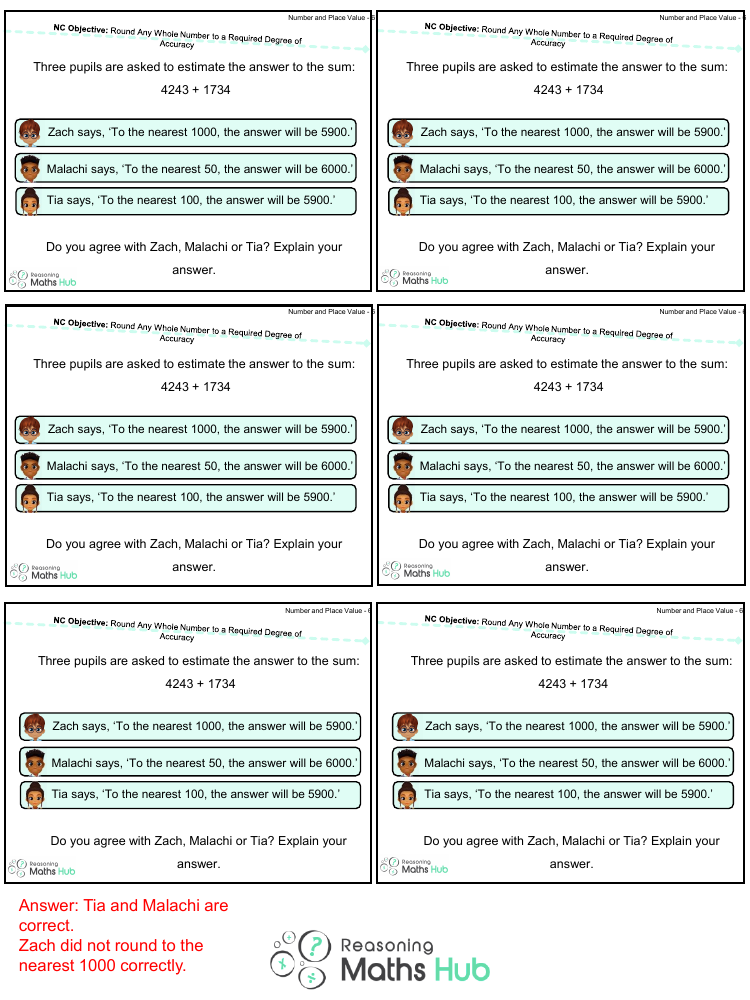Round any whole number to a required degree of accuracy 3 - Reasoning

Maths Resource Description
In a reasoning task involving number and place value, three pupils, Zach, Malachi, and Tia, are asked to round the sum of two numbers, 4243 and 1734, to different degrees of accuracy. The correct answer to the sum is 5977, which is the starting point for rounding to the nearest thousand, fifty, or hundred, as per the pupils' suggestions. Zach believes that rounding to the nearest thousand will yield 5900, but this is incorrect as the sum should be rounded up to 6000. Malachi's estimate to the nearest 50 results in 6000, which is accurate since 5977 is closer to 6000 than to 5950 when considering 50 as the rounding unit. Tia, on the other hand, suggests that rounding to the nearest hundred will also give 5900, which is correct because the sum, 5977, is nearer to 5900 than to 6000 when rounding to the nearest hundred.
The conclusion drawn from the exercise is that Tia and Malachi have both provided correct estimations according to their respective degrees of accuracy. Malachi's rounding to the nearest 50 and Tia's rounding to the nearest 100 both correctly reflect the sum of 5977 rounded to 6000 and 5900, respectively. Zach, however, did not round the sum to the nearest 1000 accurately; he should have rounded up to 6000, not down to 5900. Understanding how to round numbers to the required degree of accuracy is a fundamental aspect of number and place value, and this exercise helps students to grasp the concept by applying it to a practical example.